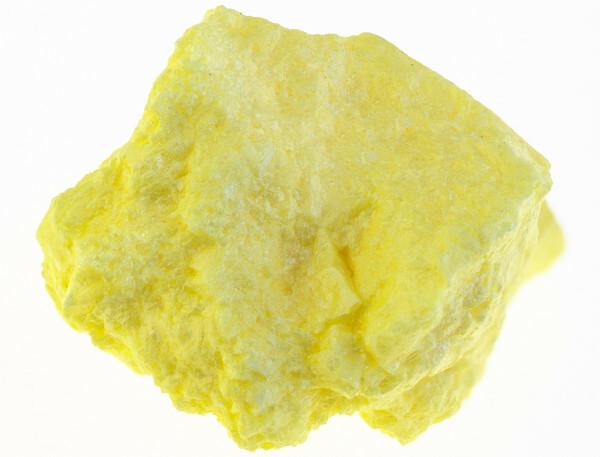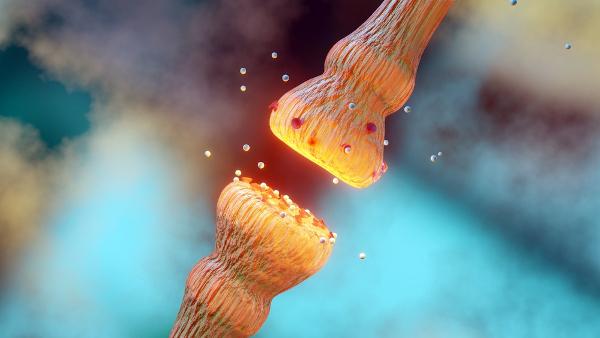You chalcogens are the chemical elements belonging to group 16 of Periodic table. They are identified because they have only six electrons in the valence shell and have as a striking feature the decrease in the non-metallic character with the increase in the atomic number in the group.
Read too: Octet theory — the theory about the number of electrons in the valence shell of a noble gas
Topics of this article
- 1 - Summary on chalcogens
- 2 - What are chalcogens?
- 3 - What are the chalcogens?
- 4 - Characteristics of chalcogens
- 5 - Properties of chalcogens
- 6 - Electronic distribution of chalcogens
- 7 - Application of chalcogens
- 8 - Chalcogens x halogens
- 9 - Solved exercises on chalcogens
Chalcogen Summary
- Chalcogens are elements belonging to group 16 of the Periodic Table.
- They are the elements oxygen (O), sulfur (S), selenium (Se), tellurium (Te) and polonium (Po).
- The non-metallic character falls along the group, with polonium being an element considered metallic.
- Oxygen is the most chemically distinct element of those with stable isotopes, with S, Se, and Te being chemically closest.
- Polonium has no stable isotopes, and its manipulation is difficult.
- Livermorium was recently discovered, and there is still no robust information about its properties.
- Chalcogens have six valence electrons.
- They should not be confused with the halogens, which are elements belonging to group 17 of the Periodic Table.
Do not stop now... There's more after the publicity ;)
What are chalcogens?
chalcogen is a term used to designate the chemical elements from group 16 of the Periodic Table. Its name comes from the Greek and can be translated as "former of ore". The chalcogens were brought for the first time in the year 1930, by the work group of the German scientist Wilhelm Blitz, from the Institute of Inorganic Chemistry of the University of Hanover, Germany.
What are chalcogens?
- Oxygen (O), atomic number 8.
- Sulfur (S), atomic number 16.
- Selenium (Se), atomic number 34.
- Tellurium (Te), atomic number 52.
- Polonium (Po), atomic number 84.
- Livermorium (Lv), atomic number 116.

Characteristics of chalcogens
The main characteristic of the chalcogen group is the fall of non-metallic character along the group. This is justified by the conductive characteristic of the isotopes of the elements. Oxygen occurs naturally through two naturally occurring isotopes: O2 and the3, both gases at room temperature.
Sulfur has several isotopes, all of which are considered insulators. The stable isotopes of Se and Te are semiconductors, while polonium is known to be a metallic conductor. Po is, by the way, the element whose chemistry is less known, since its stable isotopes are not known and due to the fact that it 210Po, the most common isotope, is difficult to manipulate.

Oxygen stands out in the group, largely because of its very high electronegativity (around 3.5), which correlates with its high ionization energy is small atomic radius. In fact, the other chalcogens (sulfur, selenium and tellurium) are more similar to each other than to oxygen.
This difference can be explained, for example, in the field of Geochemistry. There are elements called chalcophiles, which have less affinity with oxygen and end up binding with S, Se and Te. Lithophiles, in general metals alkaline, alkaline earth metals It is silicon — end up preferring to bond with oxygen.
Livermorium is a synthetic and newly discovered element, included in the Periodic Table only in 2012. Its isotopes have a short half-life, and thus their property values are still unknown.
Properties of chalcogens
The following table brings properties of the elements of group 16|1|.
Properties of chalcogens | |||||
Chemical element |
Ionization energy (kJ.mol-1) |
Electronic affinity (kJ.mol-1) |
Melting point (°C) |
Boiling point (°C) |
electronegativity |
O |
1314 |
141 |
-218,8 |
-183,0 |
3,610 |
s |
1000 |
200 |
112,8 |
444,7 |
2,589 |
if |
941 |
195 |
217 |
685 |
2,424 |
You |
869 |
190 |
452 |
990 |
2,158 |
Dust |
812 |
180 |
250 |
962 |
2,19 |
It is noticed that the values for oxygen are quite distant from the other chalcogens, explaining their difference in relation to the rest of the group.
An interesting property of some chalcogens, more specifically S, Se and Te, is the fact that they can make homoatomic chains or rings, both in molecular and ionic form.

Electronic distribution of chalcogens
All chalcogens have six electrons at valence shell.
- 8O: [He] 2s2 2p4
- 16S: [Ne] 3s2 3p4
- 34If: [Air] 3d10 4s2 4p4
- 52You: [Kr] 4d10 5s2 5p4
- 84Dust: [Xe] 4f14 5d10 6s2 6p4
- 116Lv: [Rn] 5f14 6d10 7s2 7p4
Application of chalcogens

- Oxygen: is primarily used as fuel (as for oxyacetylene or flames from hydrogen), in addition to being used as a support for breathing in specific environments and in the production of steel.
- Sulfur: is present in one of the most important chemical substances in the planet Earth, which is the sulfuric acid. A nation's levels of sulfuric acid production are even used as an indicator of economic growth. Sulfur is still used in the manufacture of fertilizers based on phosphate and other agricultural defenders, in addition to being used in refining Petroleum.
- Selenium: amorphous selenium has the ability to convert light into electricity, so this element is used in photoelectric cells, photocopiers and X-ray detectors. It is also used in the manufacture of glass, in order to counteract the green color caused by impurities of iron present in the type of silica lime soda. Its presence in glass panels also decreases the transmission of solar heat.
- Tellurium: nearly half of the tellurium produced is used as an additive for low-grade steels. carbon, in order to guarantee greater mechanical resistance. Other applications involve technological applications such as catalysts and cell cells, since tellurium is a semiconductor.
- Polonium: stands out for its toxicity, as it is one of the most toxic elements known. However, it is a radioactive element, whose isotopes, which are difficult to synthesize, have few applications in the practical field, being restricted to chemistry laboratories.
- Livermorium: newly discovered synthetic element, still has no known practical applications.
See too: What are the uses of sulfuric acid by industry?
Chalcogens vs Halogens
You halogens differ from chalcogens in some specific points. In the first place, Halogens are chemical elements belonging to group 17 of the Periodic Table., a group initiated by the atom of fluorine (F).
They have seven electrons in the valence shell, in addition to being more electronegative and having greater electron affinity compared to chalcogens of the same period.
Another difference that can be mentioned is the fact that all halogens are non-metals, and, therefore, its elements have less metallic character compared to the chalcogens of the same period.
Solved exercises on chalcogens
question 1
Group 16 elements are known as chalcogens. For a chemical element to be considered a chalcogen, how many electrons must it have in the valence shell?
A) 2
B) 4
C) 6
D) 7
E) 8
Resolution:
Alternative C
All chalcogens have six electrons in the valence shell, as can be seen, for example, when evaluating the electronic distribution of oxygen (1s2 2s2 2p4) and sulfur (1s2 2s2 2p6 3s2 3p4).
question 2
About chalcogens, answer:
i. Polonium is the most metallic chalcogen.
II. Oxygen has the lowest electronegativity among the chalcogens.
III. They have six electrons in their valence shell.
IV. Tellurium has lower electronegativity than sulfur.
The statements are correct
A) I, II and IV.
B) I, III and IV.
C) I and III.
D) II, III and IV.
E) II and III.
Resolution:
Alternative B
i. Polonium is the most metallic chalcogen. (TRUE)
Polonium is even a metallic element.
II. Oxygen has the lowest electronegativity among the chalcogens. (False)
Oxygen has the highest electronegativity among the chalcogens and the second highest in the entire Periodic Table.
III. They have six electrons in their valence shell. (TRUE)
Chalcogens are characterized by having six valence electrons.
IV. Tellurium has lower electronegativity than sulfur. (TRUE)
Tellurium has lower electronegativity than sulfur because its atomic radius is larger.
Grades
|1| MIESSLER, G. L.; FISHER, P. J.; TARR, D. A. Inorganic chemistry. 5th ed. São Paulo: Pearson Education do Brasil, 2014.
By Stefano Araujo Novais
Chemistry teacher
Would you like to reference this text in a school or academic work? Look:
NOVAIS, Stefano Araujo. "Chalcogens"; Brazil School. Available in: https://brasilescola.uol.com.br/quimica/calcogenios.htm. Accessed on July 4, 2023.
Click here and learn more about sulfur. Learn the characteristics, properties, applications, importance and history of this element.
Learn about halogens, their properties, characteristics and their main uses in everyday life.
Click and stay on top of the characteristics and curiosities about the most abundant element on Earth, oxygen!
Learn more about selenium as well as its characteristics, properties, applications, production and history.
Learn more about the chemical properties of tellurium. See also what are its applications and ways of obtaining.
Cringe
The slang adapted from English is used to designate someone who is seen as tacky, shameful, outdated and out of fashion.

